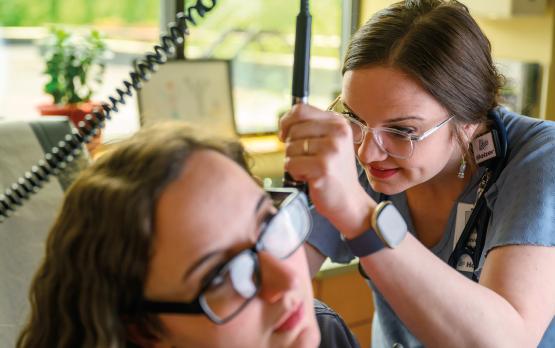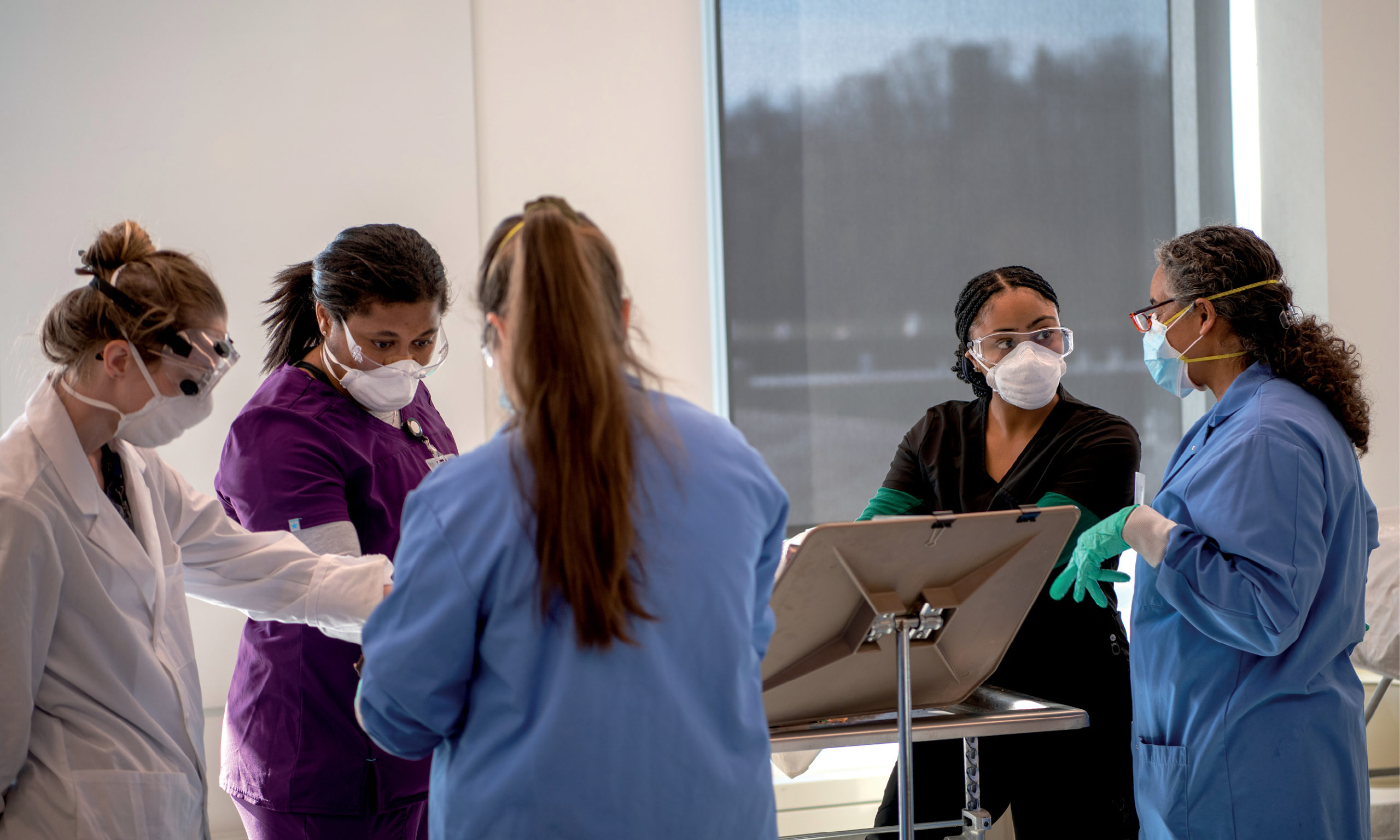
Care Lives Here
Ohio University’s Heritage College of Osteopathic Medicine has established itself as a leading provider of medical education in the state and in the nation. Now it has a home that reflects that success and its mission.
Jim Sabin, BSJ '95 | March 9, 2022
Share:
Ohio University’s Heritage College of Osteopathic Medicine has established itself as a leading provider of medical education in the state and in the nation. Now it has a home that reflects that success and its mission.
Heritage Hall welcomed its first medical students fall semester. Standing three stories tall, the 120,000-square-foot building marks a historic transformation in medical education at OHIO and the landscape of the Athens Campus. It is the first building on the Athens Campus constructed solely for the Heritage College, which was previously housed in repurposed residence halls on West Green. It’s also the first academic facility on OHIO’s new Union Street Green, which stands to revitalize the city’s near west side.
The $65 million facility is named in honor of the Osteopathic Heritage Foundation, whose $105 million Vision 2020 award included $21 million for this state-of-the-art building.
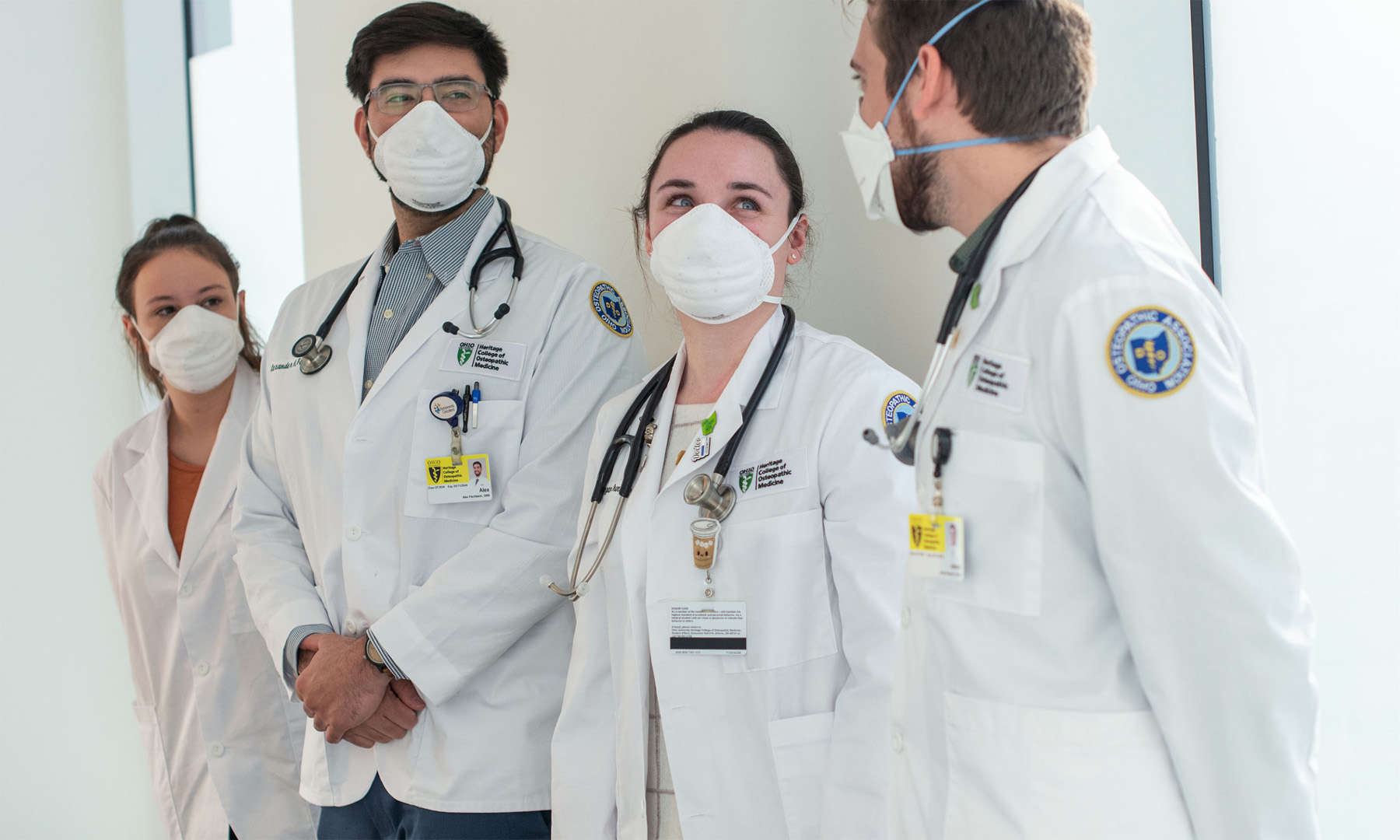
These Heritage College of Osteopathic Medicine students are among the firsts to be learning in Ohio University’s new Heritage Hall, which opened to students fall semester. Photo by Rich-Joseph Facun, BSVC '01
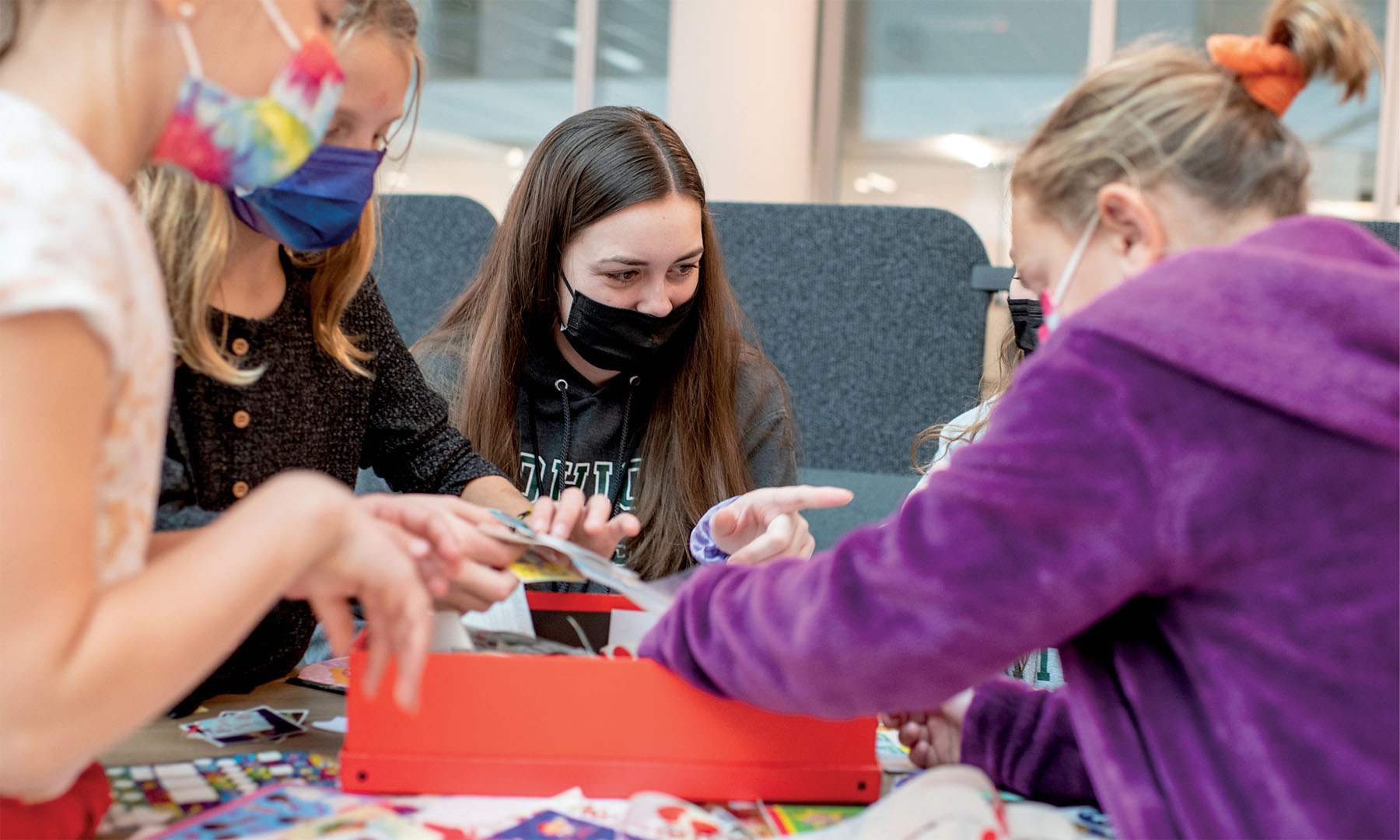
Heritage Hall began serving the Southeast Ohio community even before opening its doors to students, serving as a distribution point for more than 20,000 COVID-19 vaccines, administered in partnership with the Athens City-County Health Department. Students in the College of Health Sciences and Professions’ Family Studies’ Child-Life program have been supporting—and easing the fears of—young children at the vaccine clinics. Photo by Rich-Joseph Facun, BSVC '01

Students enjoy some food and fellowship at the Heritage College Society of Alumni & Friends Café at Factory Street, located on the first floor of Heritage Hall. Photo by Ben Wirtz Siegel, BSVC ’02
“Our mission, with critical support from the Osteopathic Heritage Foundation, is to transform the Heritage College into a nationally prominent institution to train primary care physicians,” Heritage College Executive Dean and OHIO’s Chief Medical Affairs Officer Ken Johnson, DO, says. “To do that, we needed to revamp our curriculum, and in order to fully implement that curriculum, we needed a space suited to teach medicine in a much more collaborative, modern and forward-facing way than what has been done in the past. Heritage Hall allows us to fully roll out that new curriculum. Its innovative, flexible design has positioned us as a national destination for medical education.”
Fall semester marked the first time all Heritage College students are participating in the college’s Pathways to Health and Wellness Curriculum, which debuted in fall 2018. The new curriculum and Heritage Hall were designed with a focus on wellness, a collaborative problem-solving approach to learning that carries over into clinical practice, and the flexibility needed in a fast-changing world and medical field.
“The nature of our curricular goals and how we approach education has changed over time,” says Dr. Lawrence Witmer, professor of anatomy and OHIO’s Chang Ying-Chien Professor of Paleontology. “The science of medicine is changing at such a rapid rate. Realistically, 10, 15, 20 years in the future, we will probably have a different curriculum. Having a space that is flexible is key.”
Heritage Hall isn’t just moving the college forward and preparing it for the future; it’s changed the entire look, feel and impact of medical education at OHIO—starting from the minute you walk through its doors. Visitors are greeted by a three-story, glass-roofed and window-walled atrium, setting the tone for a learning environment bathed in natural light.
“The amount of light that just falls upon us, whether we’re in class or just walking around… it’s my favorite part of the new building,” second-year medical student Harrison Koyilla says. “It’s a testament to how hard-working the administration, the faculty and students have been just to get us here. I don’t think it’s lost on any student just how much work it took to get us where we’re at right now.”
The building’s two active learning classrooms, on the first and second floors, look out onto the atrium. A more modern version of the traditional lecture halls, these unique classrooms include technology linking them to classrooms at the college’s Dublin and Cleveland campuses, allowing students across locations to learn together.
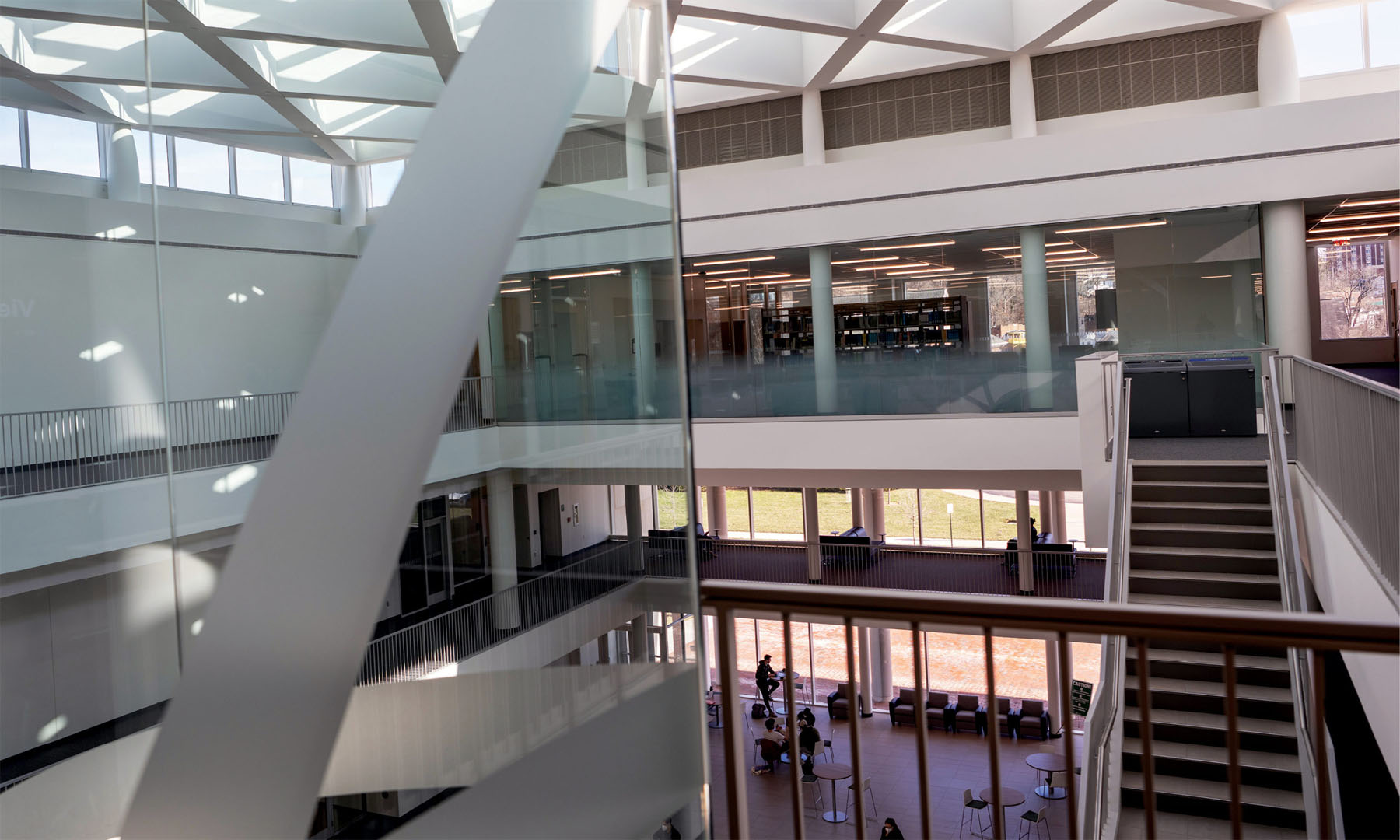
Heritage Hall welcomed its first students fall semester and has changed the entire look, feel and impact of medical education at OHIO—starting from the minute you walk through its doors. Photo by Ben Wirtz Siegel, BSVC ’02
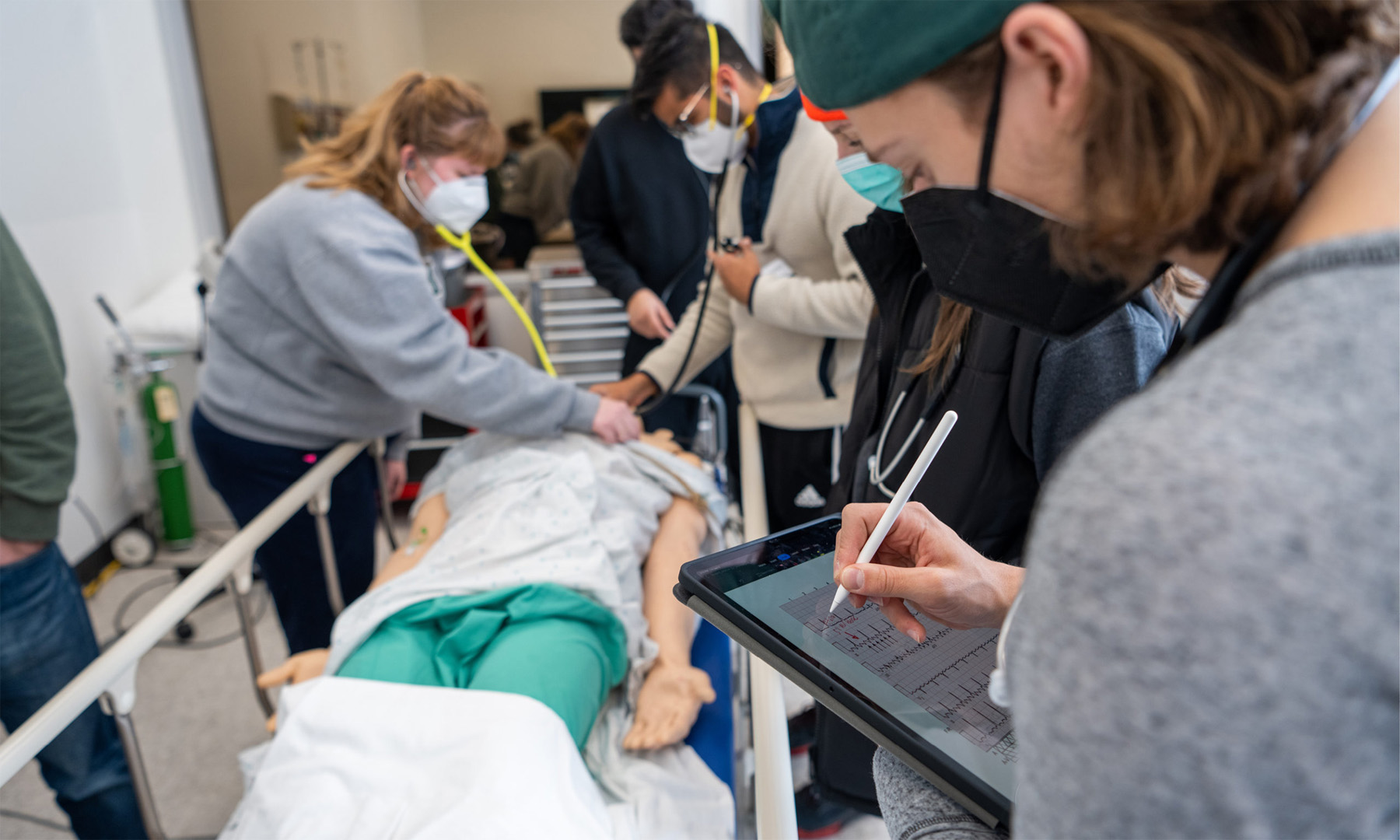
Ohio University Heritage College of Osteopathic Medicine students practice clinical skills in one of the labs inside Heritage Hall. Photo by Ben Wirtz Siegel, BSVC ’02

Dr. Elizabeth Beverly, co-director of Ohio University’s Diabetes Institute, speaks at the Patient Care and Diabetes in Appalachian Ohio and Beyond Symposium in Heritage Hall on Nov. 5. Photo by Laura Bilson, BSVC '23
“Our learning spaces are designed to really engage the students and have them not just learn facts,” notes Witmer, whose anatomy lab, along with the college’s Clinical Training and Assessment Center, has moved from the basement of Grosvenor Hall to the third and second floors, respectively, in Heritage Hall. “The reality of medicine is the practice of medicine. Having students able to be in a learning environment that replicates the clinical environments where they’ll be was critical.”
Heritage Hall isn’t just providing a space to teach wellness but also to facilitate it. The Heritage College Society of Alumni & Friends Café at Factory Street, on Heritage Hall’s first floor, offers an on-site location for healthy eating with a nod to the property’s past. A brick wall inside the café is composed of bricks from 9 Factory St., a building that previously sat on the site of Heritage Hall, and a large wooden table in the café was crafted from a tree removed from the property.
The third floor of the building was designed to serve as an indoor walking track and also includes a fitness room and mindfulness room, offering the Heritage College space dedicated to personal wellness.
“Every aspect of Heritage Hall has been crafted to reflect the possibilities of the future of medicine as well as to honor the legacy and traditions of osteopathic medicine,” says Osteopathic Heritage Foundation President/CEO Terri Donlin Huesman. “The Foundation is proud of its transformational partnership with OHIO and the Heritage College, and we are eager to welcome future osteopathic medical students that will one day experience the excellence of the osteopathic medical education program offered by the Heritage College.”
Feature image: Medical students study in the new anatomy lab inside Heritage Hall under the direction of Professor of Anatomy Dr. Susan Williams. Photo by Ben Wirtz Siegel, BSVC ’02




